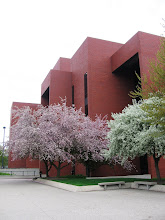Applying Metrics to Measure Outcomes

by Dr. Arthur W. Hafner, Dean of Ball State University Libraries
The University Libraries are committed to providing a rich array of library and information services for students, faculty, staff, and others in the academic community. To measure our success toward achieving various objectives that are part of our strategic plan, we use metrics.
Some of these metrics include analyzing circulation, use of computer workstations, or the volume of desktop and laptop printing by customer segments — freshman, sophomore, junior, senior, graduate, staff, faculty. We also collect statistics on the number of persons who pass through our turnstiles.
The accompanying chart makes use of turnstile data that has been collected hourly and then aggregated into weekly, monthly, and annual tables. Such data helps to inform the library administration about staffing requirements for peak periods, among other uses.
The chart shows a bar graph of the university’s fiscal year enrollment during the periods from 2003-04 through a projection for 2008-09. It also shows a line graph of the Libraries’ turnstile count per capita. The per capita graph is an upward sloping line. The data points for it are calculated by dividing the annual turnstile count by its respective annual enrollment. For example, for 2008-09, the turnstile count is estimated at 1,350,000 and enrollment is 20,243. The Per Capita Turnstile Count is 66.7 [1,350,000/20,243 = 66.7], average visits per person enrolled.
Since 2003-04, the turnstile per capita count has increased each year. The values are {45.2, 55.5, 62.4, 65.0. 66.1, 66.7}.
The interpretation of the chart is that the University Libraries have successfully attracted more students each year through our programs, services, and collections. The result is that the average attendance per student has increased. Their repeat visits show that they value our resources, which impact their productivity and success.


0 Comments:
Post a Comment
<< Home